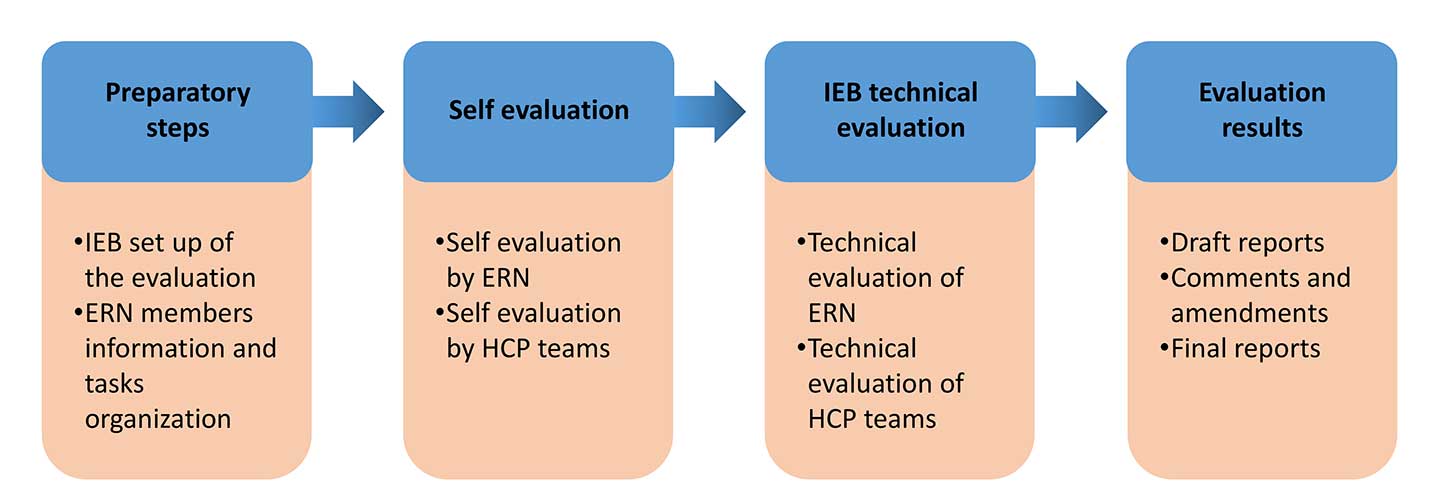The Commission launched the first evaluation of the ERNs in December 2022after, 5 years from the start of the ERNs, to verify and assess:
- the fulfilment of the criteria and conditions in Delegated Decision 2014/286/EU
- the accomplishment of the objectives of Article 12(2) of Directive 2011/24/EU
- the network's outcomes and performance and each member's contribution
Evaluation process
The evaluation process included preparatory tasks and three main steps.
Preparatory tasks:
- organisational, managerial, logistical and communication arrangements performed by the IEB (Independent Evaluation Body)
Main steps:
- a self-evaluation from each ERN and its members to determine if ERNs meet their original objectives.
- a technical evaluation, which include interviews, a documentation review, and on-site/online audits, performed by the IEB.
- reports drafting for each network, for each ERN member and for the ERNs system.
During the evaluation, all relevant stakeholders, including the ERN members, the Health Care Providers, Board of Member States, the ERNs coordinators, and patient organisations, were consulted.
Timeline

Operational criteria
The self-evaluation was based on several criteria. Each criterion was followed by a list of measurable elements to assess the specified aspect or level of performance.
Some measurable elements were considered “core” elements to be assessed.
The other measurable elements referred to important areas in which networks or their members should work and whose level of development indicates their maturity status.
These criteria and measurable elements were shared between:
- European Reference Networks:
20 operational criteria with 52 measurable elements, of which 30 are core and classified in 7 areas, including governance and coordination, clinical care, quality and patient safety, patient-centred care, contributions to research, education and training, and networking and dissemination. - Clinical Centres:
24 operational criteria with 64 measurable elements, of which 29 are core, and classified into 7 areas, including patient-centred care, organisation and management, research and training, exchange of expertise and e-health, quality and safety, competence and outcomes of care, and human resources.
The evaluation manual is the reference handbook, including the evaluation of ERN networks and their members. The evaluation toolbox is a collection of 18 items: guidelines, forms, templates, references, documents and other items.
Evaluation results of the first five years evaluation
In 2023, 24 European Reference Networks, including 836 members, completed their first evaluation. Overall, the evaluation concluded that the ERN ecosystem is functioning well, meaning they are delivering on highly specialist work for rare disease patients such as consultations for diagnosis and therapies, the production of clinical guidelines and specialised trainings. 100% of the ERN networks and 88% of their members obtained satisfactory results, while only 4 % of the members saw their membership terminated. 72 Clinical Centres had to implement “Improvement Plans” and will go through the re-evaluation process in 2025.
